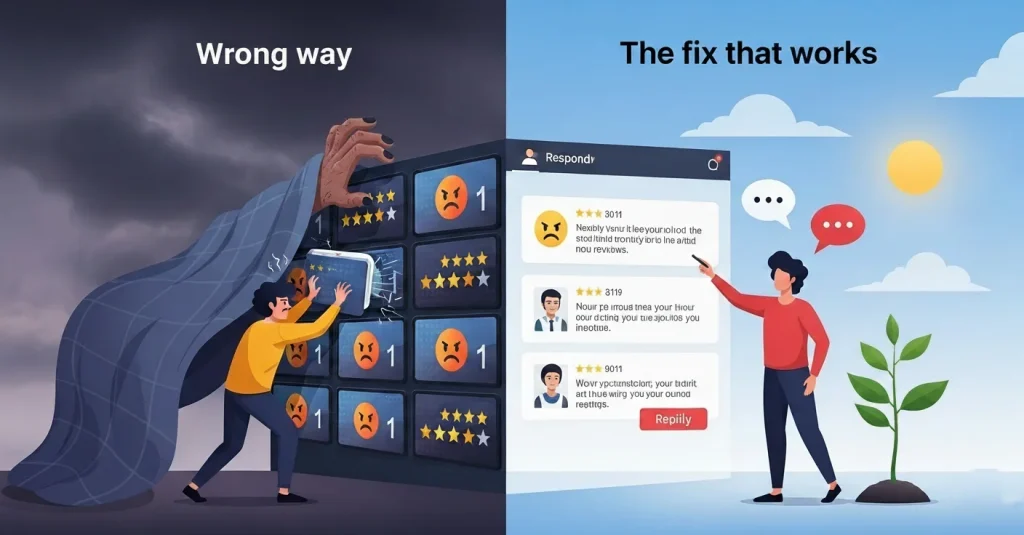Online reviews can help a business grow or push it into decline. But many companies mishandle feedback in ways that damage trust. Ignoring complaints, deleting criticism, or posting canned replies only makes customers more frustrated.
The good news? With the right approach, reviews can become a powerful tool for building loyalty and credibility.
Why Reviews Matter?
Reviews influence how people decide where to spend their money. A strong reputation signals reliability, improves retention, and increases sales. Studies show companies with more positive reviews can see retention rates climb by 20% or more.
To protect that trust, businesses should:
- Monitor reviews consistently.
- Respond quickly and thoughtfully.
- Use social media as an open channel for dialogue.
Managing reviews well doesn’t just protect image—it directly supports growth.
The Wrong Approaches?
Ignoring Negative Feedback
Hoping complaints will disappear is a mistake. When businesses stay silent, customers share their frustrations elsewhere, leading to churn and lost revenue. A clothing brand once ignored hundreds of complaints about sizing and watched sales drop by 30%.
Over-Policing Reviews
Trying to control or delete critical reviews creates suspicion. When customers feel silenced, they disengage. Platforms like TripAdvisor faced backlash when users thought honest opinions were being removed unfairly. Transparency builds trust; censorship erodes it.
Responding with Generic Messages
A “Thanks for your feedback” template signals indifference. Customers want to know someone actually read their review. Generic replies reduce credibility and can cut perceived care by more than half.
What Customers Expect?
- Speed: Most expect a reply within 24 hours.
- Transparency: Address both praise and criticism openly.
- Personalization: Responses that reference details of the review feel genuine.
Companies that meet these expectations often see higher engagement and stronger loyalty.
The Fix That Works
Encourage Authentic Feedback
Invite customers to share honest experiences soon after purchase. Personalized emails or texts work well. Brands using tools like Trustpilot or Yotpo often see review volume rise by 30–40%.
Personalize Every Response
Use the reviewer’s name, mention specifics, and thank them for their input. Tailored replies show effort and improve satisfaction scores. Even templated responses can be customized with small details.
Use the Right Tools
Set up monitoring software or alerts to track reviews. Pick a solution that fits your budget and business size so no feedback is missed.
Analyze and Improve
Don’t just respond—learn. Track average ratings, response times, and recurring themes. Use those insights to fix problems before they grow.
Stay Proactive
Schedule regular review checks. Encourage reviews before issues pile up. Respond quickly when problems surface. Companies that make feedback part of daily operations often see repeat business rise by 30%.
Final Thoughts
The wrong way to handle reviews is easy to spot: silence, censorship, or generic replies. These habits weaken trust and push customers away.
The fix is straightforward: be open, be fast, and be human. When businesses treat reviews as conversations instead of chores, they turn feedback into loyalty—and loyalty into growth.









